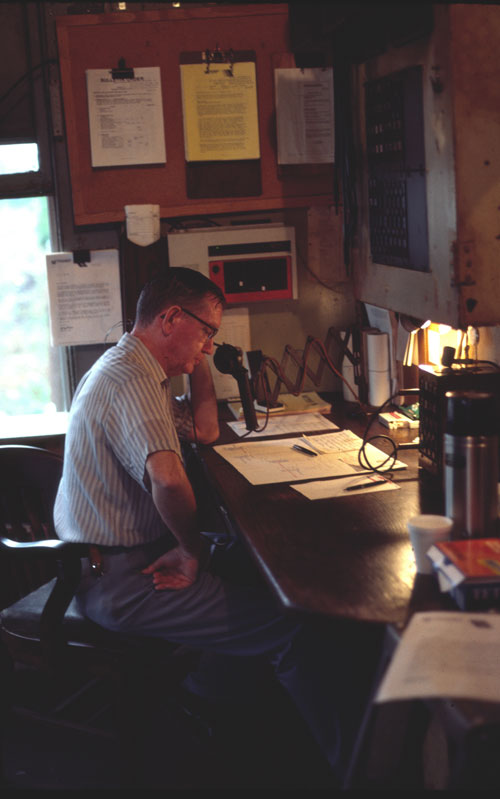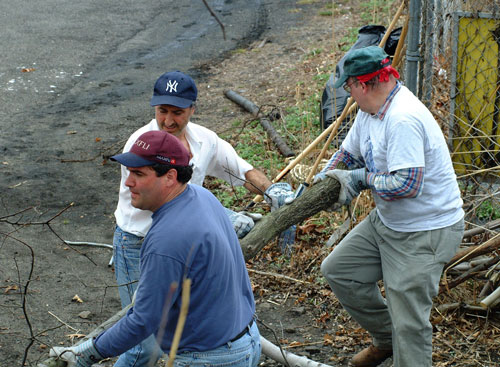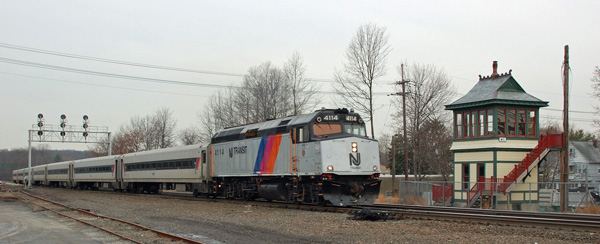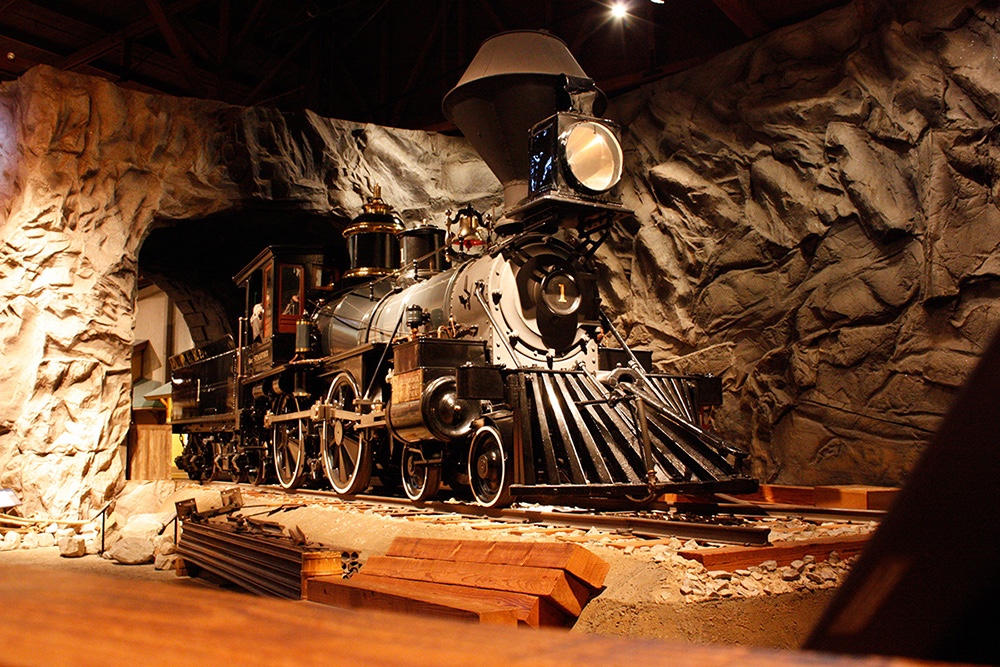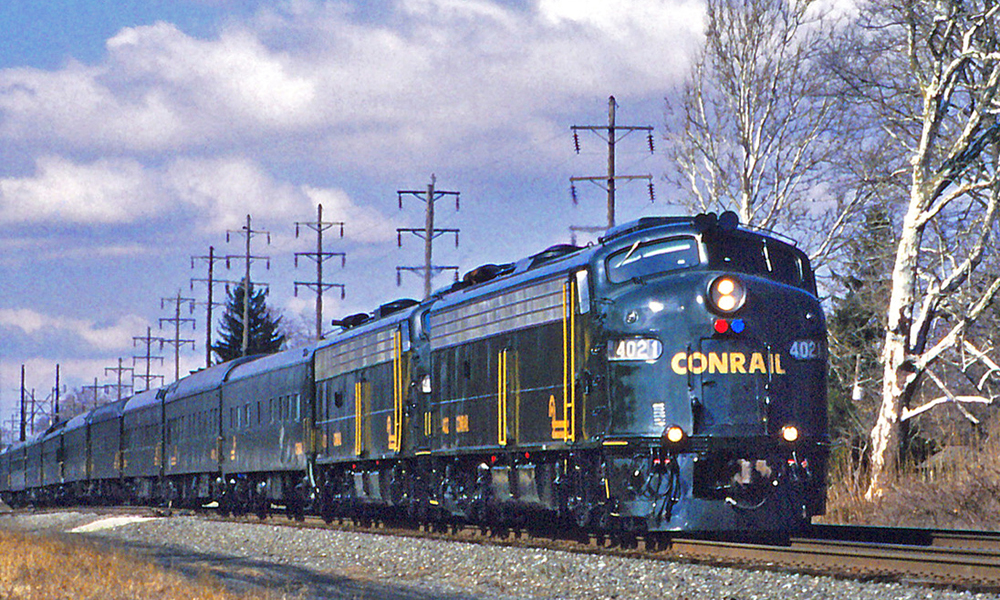Ten years of dreams and five years of hard work will come to fruition at the end of 2009 when the former Erie Railroad WC Tower in Waldwick, N.J., reopens as a museum. The tower played a role in channeling the interest of neighborhood children to work for the railroad, as author Jim Warsher writes about in the July 2009 issue of Trains Magazine.
Erie Railroad predecessor New York, Lake Erie & Western built the wood tower in 1890. Situated in a North Jersey suburb on Erie’s Jersey City-Chicago main line, the tower controlled mainline trains plus movements in and out of an adjacent 6-track commuter-train layover yard. Two freight customers also had sidings by the tower, one on each side of the right-of-way.
By 1999, the tower showed serious signs of deterioration. That year, the Waldwick Historical Society purchased the structure from a private individual, with the idea of preserving the building, although no physical work would occur for four years.
My great-grandfather, Harvey Springstead, had been an Erie engineer based in Waldwick (and profiled in the April 2005 issue of Trains magazine as “Erie’s Top Notch Engineer”). Early on I joined a small group of historical society members who wanted to see the tower restored. We began by documenting the building and getting estimates for the work that lay ahead. We also started applying for grants and made presentations to the railfan community, asking for donations and information. The backbone of the funding came from a bequeath by one individual, Robert Keeble. Through four matching-fund grants from the Bergen County Historic Preservation Trust Fund, we were able to multiply Keeble’s generous gift to the completely cover the $200,000 restoration project.
With the initial grant, the society secured the property and removed toxic pigeon and small animal waste from the building. In 2004, the first real work began: rehabilitating the exterior. That effort concluded in fall 2005, when all of the exterior siding, painting, and access work was completed. Another grant funded a new slate roof and the replacement of missing chimney and copper cresting.
The current grant will close out with the completion of the initial interior work that started in early 2007. The building once again has electrical service and we are replacing the temporary windows with historically accurate units. In preparation for installing new interior beadboard paneling (to replicate the tower’s original paneling), the concrete stucco that had been used to cover the walls was removed – during one exhausting and filthy day of hammering and pulling undertaken by Ralph Scrofani and me. Our efforts left the interior clear for electrical work and the new paneling (and also revealed the former homes of many small animals that had created nests in the wall space during the nearly 20 years the building was left vacant).
Most of the restoration work has been done by contractors, but volunteers have assisted as well, performing jobs such as clearing brush, removing debris from the building, constructing a small retaining wall, and touch-up painting. This work has been done by our tower restoration team (a group of about five) and members of the Bergen-Rockland chapter of the National Railway Historical Society.
Once the new windows are in place, the next step will be to run the electric lines and install the paneling. The floors were replaced with concrete many years ago, but we plan to put down yellow pine flooring over the concrete to return the original look to the interior. The final hurdle will be the installation of a fence to keep visitors off of NJ Transit’s active tracks. The tower sits adjacent to NJ Transit’s Main-Bergen County Line between Hoboken Terminal and Suffern, N.Y., also used by Norfolk Southern locals and MTA Metro-North commuter trains between Hoboken and Port Jervis, N.Y. (Riders can transfer at Secaucus Junction to reach Manhattan and other NJT commuter lines.) The Waldwick station is just steps from the tower. In fact, the fence might be a hindrance to some neighborhood residents who take a shortcut to the station and other parts of town by crossing the tracks near the tower. The society has secured permission to create this fence in a pattern that replicates the fencing originally used by the Erie to keep passengers from cutting across the tracks at Waldwick and other commuter stations.
The restored tower will be open as a museum dedicated to the many Waldwick-area Erie employees who worked the tower and yard for nearly 100 years.
Throughout this project the Waldwick Historical Society has worked with and been supported by many people and organizations, in addition to the Bergen Country Historic Trust. Not the least of these organizations is the Borough of Waldwick and New Jersey Transit, the tower’s landlord. NJ Transit has agreed to reinstall the historic pistol-grip interlocking machine and model board in the tower at no cost to the Waldwick Historical Society. Members were told that, “the equipment had been in safe keeping for a planned NJ Transit museum but the tower it came from seems a better use of the equipment.”
Once the machine is in place, a dedication ceremony will follow, currently planned for late 2009.
You can track the tower’s restoration and find out more on the society’s Yahoo group: http://finance.groups.yahoo.com/group/allaboardwaldwick/.
And for more on Erie Railroad’s operations in North Jersey, pick up the July 2009 issue of Trains Magazine.







